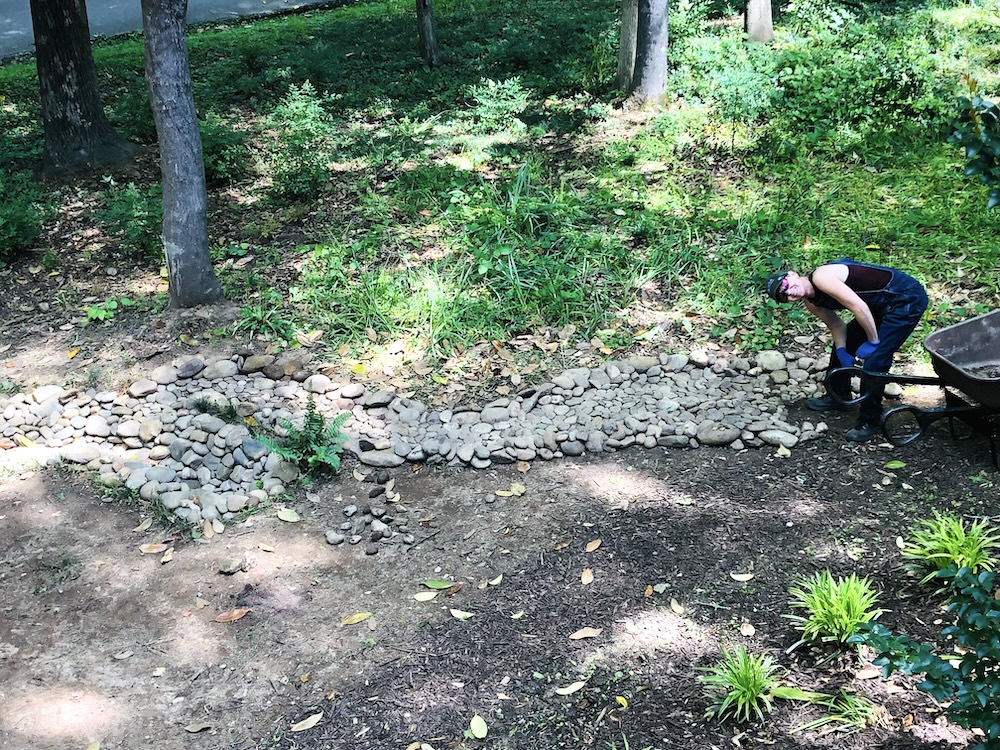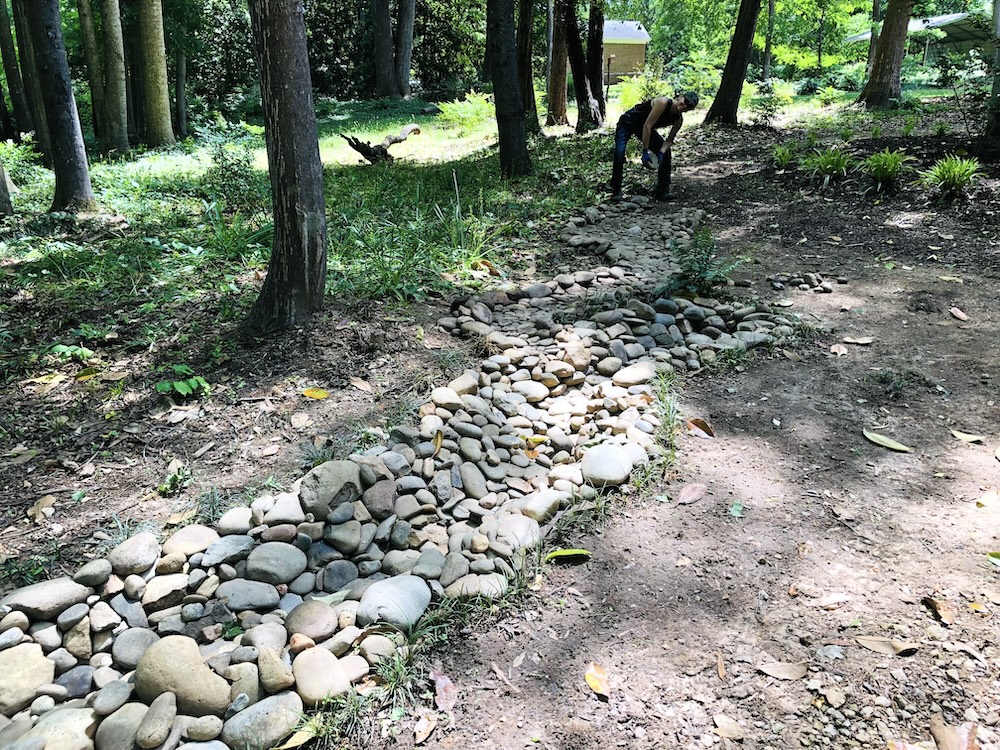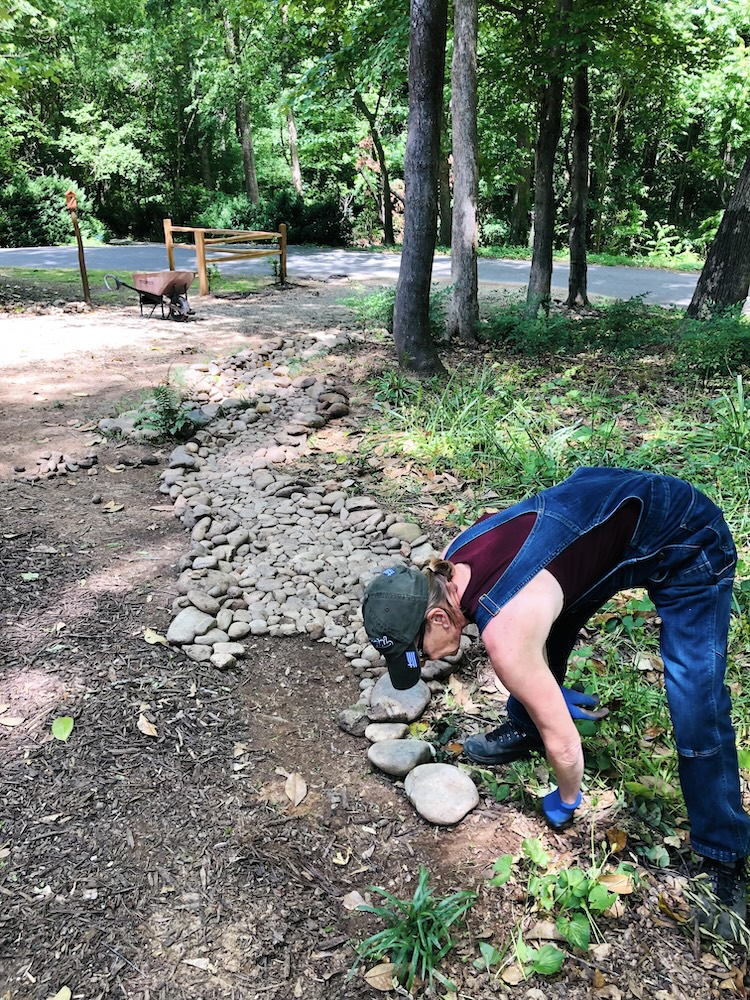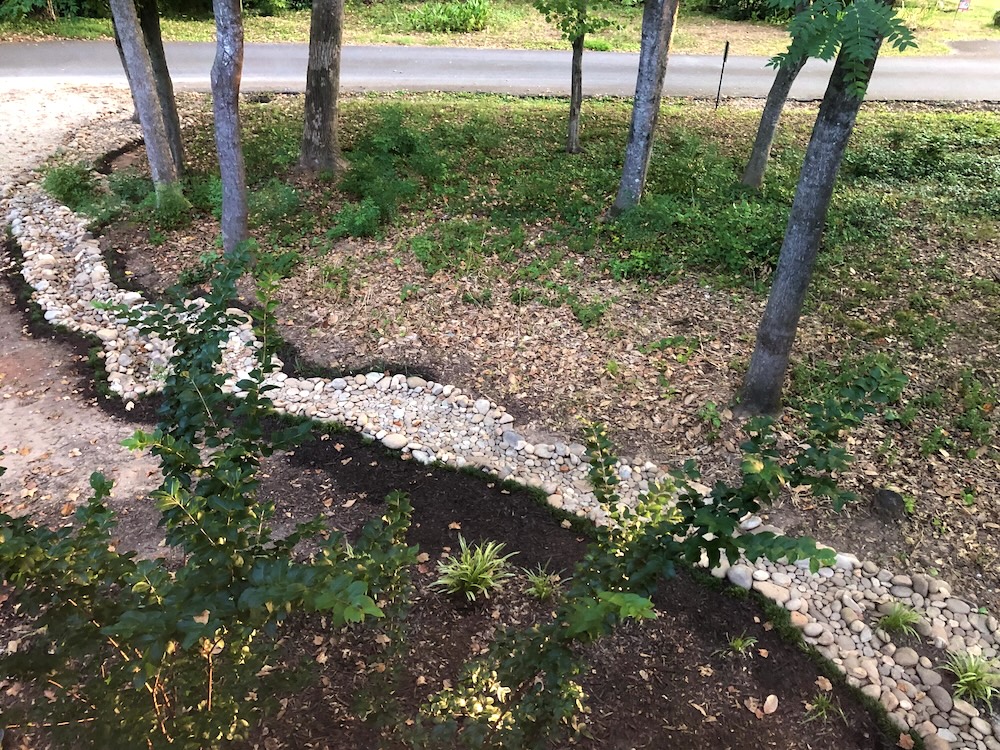Up a New Crick

“When I was in the third grade, my unseasoned student teacher from Long Island insisted my use of the word ‘crick’ was incorrect and went so far as to contend that there was no such word. Embarrassed, ridiculed in front of my entire class, I resorted to the dictionary, and the student teacher learned something that day. Some (most of us in my part of the country) refer to a creek as a ‘crick’ and, according to Webster, the pronunciation is not sub-standard. (Even Mark Twain uses the word in his Adventures of Huckleberry Finn.) I suspect my teacher also learned that belittling a third grader because of her rural and unsophisticated manner of speaking is not only hurtful to the child but humbling for the teacher.”—Rev. Robin White
Wing + Prayer
By The Reverend Robin White

“Live water heals memories. I look up the creek and here it comes, the future, being borne aloft as on a winding succession of laden trays. You may wake and look from the window and breathe the real air, and say, with satisfaction or longing, ‘This is it.’ But if you look up the creek, if you look up the creek in any weather, your spirit fills, and you are saying, with an exulting rise of the lungs, ‘Here it comes!’” —Annie Dillard, Pilgrim at Tinker Creek

PENDLETON South Carolina—(Hubris)—August/September 2024—The ditch along the road in front of the house had been “landscaped” with gorgeous river rock. Those rocks, however, had become inundated with weeds over the years since the initial landscaper has done his work, and, since I don’t use chemical weed killers, I needed to find a creative way to approach the 3-foot-wide and 80-foot-long ditch of stone now knee-deep in tenacious and thorny weeds.
Early in the spring of this year, I began digging out and moving, by hand and by barrow, those mud-covered, weed-entangled stones—some as large as boulders; others as small as quarter-sized pebbles.
Our curving concrete driveway had never afforded vehicles a straight shot to the street. Because of its slight bend, visitors and delivery vans, more often than not, ended up driving across the lawn, which, in early spring, became mud—deeply-rutted mud.
As a solution to the weedy ditch and the muddy ruts, I began creating a two-foot wide, 35-foot-long babbling brook (minus the babble) along one side of our primary, paved driveway.

First, I removed what had been a poor excuse for grass; then, I unrolled and pinned down “weed block” fabric and, finally, I began the painstaking business of meticulously and sculpturally placing the river rock.
The finished project was satisfying, but the ditch in front of the house still brimmed with stones.
On one side of our property, a gutter’s downspout drained into a buried PVC pipe that emerged several feet away from the foundation of the house. I decided it would be a nice spot for a French drain. I would create a small (well, it started out small) river rock ditch to provide drainage.
As I labored, and spring wore on, my mind wandered back to the summer days when I was a child. We lived in a little house on a creek that flowed into the Otselic River. It was a creek, but we referred to it as “the crick,” a dialectical variant familiar throughout rural America, North and South.
When I was in the third grade, my unseasoned student teacher from Long Island insisted my use of the word “crick” was incorrect and went so far as to contend that there was no such word. Embarrassed, ridiculed in front of my entire class, I resorted to the dictionary, and the student teacher learned something that day. Some (most of us in my part of the country) refer to a creek as a “crick” and, according to Webster, the pronunciation is not sub-standard. (Even Mark Twain uses the word in his Adventures of Huckleberry Finn.) I suspect my teacher also learned that belittling a third grader because of her rural and unsophisticated manner of speaking is not only hurtful to the child but humbling for the teacher!

My brother and I spent nearly all our summer days playing in the crick; looking for crayfish, catching guppies, snails, and frogs; and repositioning stones, because constructing a dam was crucial to our summer fun.
The creek wasn’t quite deep enough, during the summer months, for us to cool off in a deep pool, so we stacked rocks upon rocks, and made a mortar of pebbles, leaves, branches, and weeds, creating for ourselves and our friends both a swimming hole and a fishing hole. It took skill and patience and, each year, we got better and better at designing our levee.
We wore our creek sneakers, worn-out Keds Red Ball Jets, with our big toes poking out through holes in the top of the canvas. We endured only a couple of summer casualties. One time, my brother smashed his finger between two huge rocks and had to go to the hospital for stitches. Another time, 3-year-old identical twin girls, the daughters of the Congregational minister who lived down the street, wandered from their back yard into ours to watch the dam construction. One of them, for whatever reason, decided to throw a rock at me. Blood gushed from my head wound, but, after being cleaned up and examined by Aunt Ruthie, the family RN, it was determined that a butterfly bandage would suffice.
In June of 1969, there was one other catastrophe that not only took out the dam we had begun, but our entire yard. As my mother tells it, she woke in the middle of the night to something banging or bumping. She went downstairs to investigate and found the hardwood floors covered in muddy water. When she looked out the window, she saw trees and limbs bobbing up and down in a rushing torrent. When she saw the refrigerator float by, she called for my father.

Moving rocks, “picking stone,” took on a new meaning that summer, as we, with the help of many neighbors, removed the boulders, rocks, pebbles, and other debris from what had once been a lawn and beautiful flower beds. We would build no swimming hole in the summer of ‘69.
What I learned that summer, and in other summers of watching our little dam either wash away or dry up, is that the elements will sometimes ride roughshod over any plans we might devise.
It was a lesson, however, that I needed to relearn here, in the spring of 2024, when heavy rains directed and redirected the flow of water in and around the French drain and creek bed I had sculpted from wheelbarrow after wheelbarrow after wheelbarrow of stones.
I watched, however, the clear path that the torrents etched, and moved my artificial streambed again and again in order to accommodate the flow of runoff. Eventually, I got it right. However, by the time I finished my project, the spring rains had ceased and now we are deep in a drought. My little, (hu)manmade, winding creek, landscaped with dwarf, green grasses and islands of native plants, looks great but whether or not it will “work” when the rains return has yet to be determined.
As I await, with trepidation, the autumnal events that will determine the future of our country, my little “crick” has become a metaphor. Will what I have built, will what we have all built, withstand the greater forces no single pair of hands can prevail against? Or will what we have devised be swept away? Rock of ages cleft for me, let me hide myself in thee . . . .
2 Comments
Anita Sullivan
Dear Robin, I want you to know that the river rocks in my garden here in Eugene, Oregon look exactly like the ones
lining the dry crick you have been making! The crick you have created, reminds me of Rainbow Serpent,
who, in many mythologies, runs along the bottom of a larger picture, possibly serving as a guiding path, or a river. I love seeing
how it glows in your photos! But what about your back?
Claire J Bateman
Such beautiful stonework, Robin, and such a luminous essay! Thank you!